Hey there! Have you ever wanted to immerse yourself in a different culture and explore the rich heritage of a foreign country? Well, if you’re up for an adventure, then cultural tours in Suriname might just be the perfect option for you!
Suriname, a small country nestled on the northeastern coast of South America, is a hidden gem when it comes to cultural exploration. With its diverse population, including Amerindians, Afro-Surinamese, Javanese, and many more, this country is a melting pot of cultures. During these tours, you’ll have the opportunity to delve into the heart and soul of Suriname’s unique heritage.
From visiting traditional indigenous villages to witnessing vibrant celebrations and festivals, you’ll get a chance to learn more about the customs, traditions, and history of the local people. Whether you’re exploring the colorful markets of Paramaribo, the capital city, or hiking through dense rainforests to discover hidden waterfalls, each experience will leave you with a deeper appreciation for Suriname’s cultural richness. So, get ready to embark on an unforgettable journey and stay tuned to learn more in the upcoming article! Suriname, a small country on the northeastern coast of South America, is a melting pot of diverse cultures and traditions. With a rich history of colonization, slavery, and independence, the country’s cultural heritage is unique and vibrant. In recent years, cultural tourism has gained popularity in Suriname, allowing visitors to immerse themselves in the local heritage and learn about its fascinating past. From indigenous communities to African descendants and Javanese and Hindustani heritage, there are endless opportunities to explore Suriname’s diverse culture.
History of Suriname
Suriname has a complex and intriguing history, shaped by colonization, slavery, and independence. The country was first colonized by the British in the 17th century and later became a Dutch colony. The Dutch brought enslaved Africans to work on the plantations, leaving a lasting impact on the country’s culture and heritage. In 1975, Suriname gained independence from the Netherlands, marking a significant milestone in its history.
Colonization by European Powers
The colonization of Suriname by European powers played a crucial role in shaping the country’s cultural landscape. The British and Dutch brought their customs, language, and architecture, leaving behind a legacy that can still be seen in Suriname’s capital city, Paramaribo. The historic inner city of Paramaribo, a UNESCO World Heritage site, showcases the colonial architecture and tells the story of Suriname’s past.
Abolition of Slavery
The abolition of slavery in Suriname in 1863 was a pivotal moment in the country’s history. With the end of slavery, Suriname’s cultural landscape began to shift as newly freed African descendants sought to reclaim their heritage. Today, exploring the African heritage in Suriname allows visitors to learn about the history of slavery, visit historic plantations, and experience traditional Afro-Surinamese music and dance.
Independence from the Netherlands
Suriname’s journey to independence from the Netherlands in 1975 marked a turning point in the country’s history. With newfound freedom, Suriname began to embrace and celebrate its cultural diversity. Through cultural tours, visitors can experience the vibrant Javanese and Hindustani heritage that has become an integral part of Suriname’s cultural fabric. Discovering the traditions, cuisine, and rituals of these communities offers a unique insight into Suriname’s multicultural society.
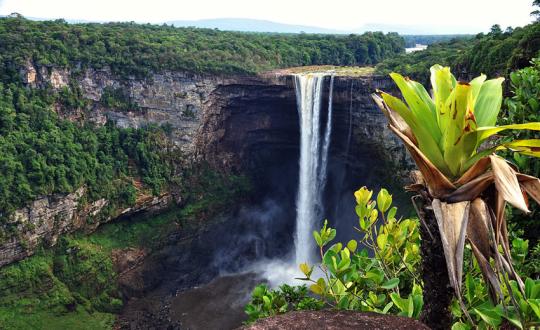
Diversity of Surinamese Culture
Suriname is home to a diverse range of cultures, with indigenous communities, African descendants, and Javanese and Hindustani heritage all contributing to the country’s rich tapestry of traditions. Exploring the distinct cultures within Suriname is not only an educational experience but also a way to promote understanding and appreciation for cultural diversity.
Indigenous Communities
Suriname is home to a number of indigenous communities, each with its own customs and traditions. Exploring these communities allows visitors to learn about their ways of life, participate in traditional rituals and ceremonies, and understand the deep connection between the indigenous people and the natural environment. The Maroon villages, located deep in the rainforest, offer a glimpse into the traditional customs and rituals of the Saramaka and Aukaner Maroons, descendants of escaped African slaves.
African Descendants
The African heritage in Suriname is deeply rooted in the country’s history. Visiting historic plantations, such as the Frederiksdorp and Mariënburg plantations, provides a poignant reminder of Suriname’s past and allows visitors to learn about the history of slavery. The rich Afro-Surinamese culture comes alive through traditional music and dance performances, where the rhythms of the drums and the energy of the dancers can be felt by all.
Javanese and Hindustani Heritage
The Javanese and Hindustani communities in Suriname have their own vibrant traditions and customs. Exploring the bustling Javanese neighborhoods, known as “Kringen,” allows visitors to experience the vibrant Javanese culture through music, dance, and delicious cuisine. Hindu temples, such as the Arya Dewaker Temple, offer a glimpse into the spiritual practices of the Hindustani community. Tasting traditional Javanese and Hindustani cuisine is a feast for the senses, with flavors that reflect the blending of different cultures.
Importance of Cultural Tours
Cultural tours in Suriname play a vital role in preserving traditions, promoting intercultural understanding, and providing economic benefits through tourism. By participating in cultural tours, visitors not only gain a deeper appreciation for Suriname’s cultural heritage but also contribute to the preservation of traditions for future generations.
Preservation of Traditions and Heritage
Cultural tours provide a platform for local communities to showcase their traditions and preserve their cultural heritage. By actively participating in traditional customs and rituals, visitors can gain a deeper understanding of the significance of these practices and help ensure their continued relevance. This engagement also encourages local communities to pass down their traditions to younger generations, fostering a sense of pride and identity.
Promotion of Intercultural Understanding
Cultural tourism is an effective way to promote intercultural understanding and break down barriers between different communities. By interacting with locals, learning about their customs, and sharing experiences, visitors develop a greater appreciation for cultural diversity. This understanding not only enriches the travel experience but also promotes tolerance and harmony between cultures.
Economic Benefits Through Tourism
Cultural tourism contributes significantly to the local economy by generating income for local communities. By supporting community-based tourism initiatives, visitors can directly contribute to the well-being of the communities they visit. This sustainable approach ensures that the economic benefits of tourism are distributed more evenly and that local communities have a stake in the preservation of their cultural heritage.
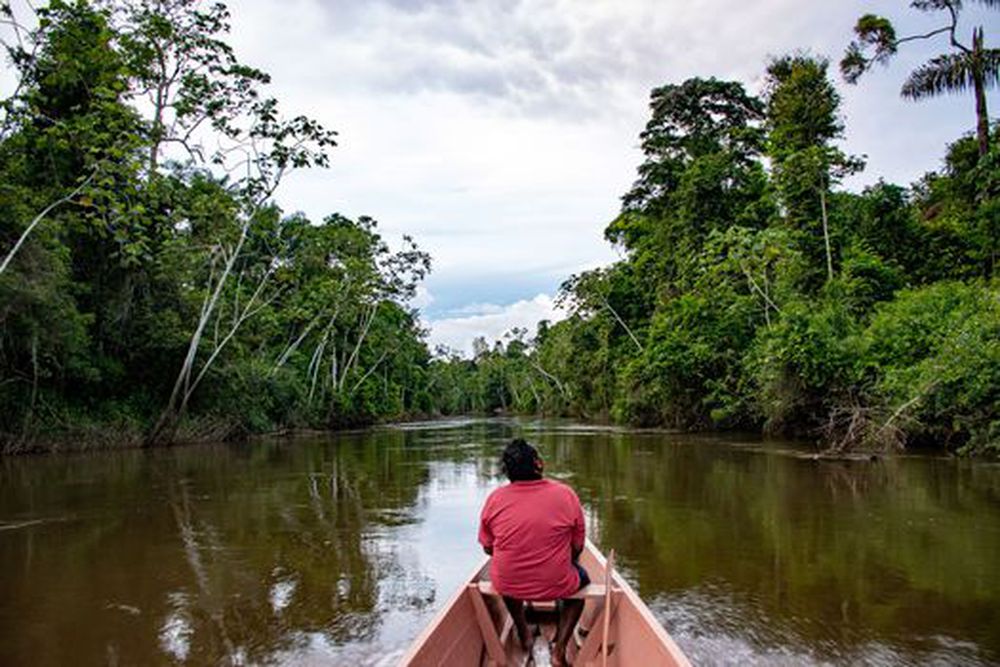
Exploring Indigenous Communities
Visiting indigenous communities in Suriname offers a unique opportunity to learn about their way of life, participate in traditional arts and crafts, and gain an appreciation for their deep connection with nature.
Maroon Villages in the Rainforest
Deep in the rainforest, hidden from the modern world, lie the Maroon villages of Suriname. These villages are home to the Saramaka and Aukaner Maroons, descendants of escaped African slaves who sought refuge in the dense forests. Exploring these villages allows visitors to learn about the Maroon traditions and customs, witness traditional rituals, and engage in traditional arts and crafts, such as basket weaving and woodcarving.
Learn about Traditional Customs and Rituals
In the indigenous communities of Suriname, traditional customs and rituals are an integral part of everyday life. Visitors can witness traditional dances, hear the captivating stories of the elders, and participate in rituals that have been passed down through generations. These immersive experiences offer a deep insight into the cultural practices and spiritual beliefs of the indigenous communities.
Participate in Traditional Arts and Crafts
Indigenous communities in Suriname are known for their intricate arts and crafts, which reflect their connection with nature and their ancestral heritage. Visitors can participate in workshops and learn traditional techniques such as pottery making, weaving, and mask carving. These hands-on experiences allow visitors to appreciate the skill and craftsmanship of the indigenous artisans while creating their own unique souvenirs.
Discovering African Heritage
Suriname’s African heritage is a testament to the strength and resilience of the African descendants who were brought to the country as slaves. Exploring the African heritage in Suriname allows visitors to learn about the history of slavery, visit historic sites, and experience the rich Afro-Surinamese culture.
Visit Historic Plantations
Historic plantations, such as Frederiksdorp and Mariënburg, provide a glimpse into the harsh realities of slavery and the lives of the enslaved Africans. These plantations have been preserved as living museums, allowing visitors to explore the plantation houses, walk through the fields where sugarcane and coffee were cultivated, and learn about the daily lives of the enslaved.
Learn about the History of Slavery
The history of slavery in Suriname is a painful chapter in the country’s past, but it is important to learn about and remember. Museums and heritage centers, such as the Suriname Museum and the Nola Hatterman Art Academy, offer exhibitions and educational programs that delve into the history of slavery and its impact on Surinamese society. By understanding the history of slavery, visitors can gain a deeper appreciation for the struggles and achievements of the African descendants in Suriname.
Experience Traditional Afro-Surinamese Music and Dance
Afro-Surinamese music and dance are vibrant expressions of the African heritage in Suriname. Influenced by rhythms and melodies brought from Africa, these art forms have evolved to become unique to the Surinamese culture. Visitors can experience traditional Afro-Surinamese music and dance performances, where the energetic beats of the drums and the graceful movements of the dancers create an atmosphere of celebration and joy.
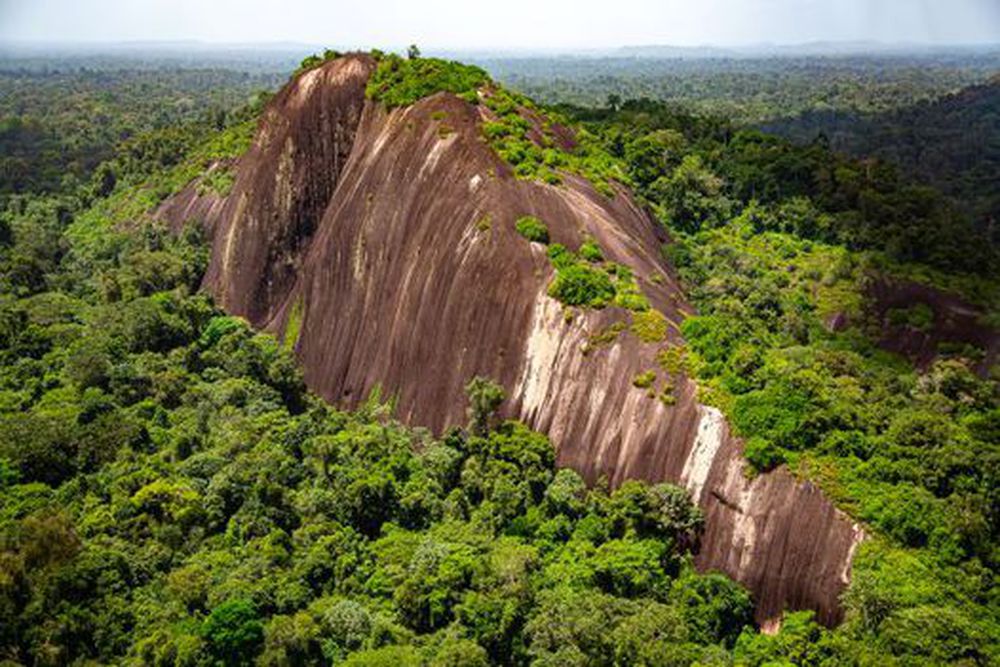
Immerse in Javanese and Hindustani Culture
Suriname’s multicultural society is enriched by the contributions of the Javanese and Hindustani communities. Exploring their culture allows visitors to discover vibrant neighborhoods, experience Hindu rituals, and taste delicious Javanese and Hindustani cuisine.
Explore Vibrant Javanese Neighborhoods
Javanese neighborhoods, known as “Kringen,” are vibrant and bustling hubs of activity in Suriname. Visitors can explore these neighborhoods, filled with shops, restaurants, and cultural centers, to experience the lively Javanese culture. This includes witnessing traditional Javanese music and dance performances, such as the energetic “Tayub” dance, and exploring the local markets where spices, batik fabrics, and Javanese snacks can be found.
Discover Hindu Temples and Rituals
Hinduism is a prominent religion in Suriname, thanks to the Hindustani community who migrated to the country as indentured laborers. Visiting Hindu temples, such as the Arya Dewaker Temple in Paramaribo, offers a unique insight into their religious practices and rituals. Visitors can witness traditional Hindu ceremonies, learn about the symbolism behind the intricate temple decorations, and experience the peaceful atmosphere of these sacred spaces.
Taste Traditional Javanese and Hindustani Cuisine
Food is an essential part of any culture, and Suriname’s Javanese and Hindustani communities have their own unique culinary traditions. Visitors can indulge in traditional Javanese dishes, such as “Saoto” soup and “Nasi Goreng,” or savor the flavors of Hindustani cuisine, including curries and “Roti” bread. Tasting these dishes is a delicious way to explore the cultural heritage of Suriname and appreciate the fusion of flavors that represents the country’s multicultural society.
Historical Sites and Museums
Suriname’s historical sites and museums offer a glimpse into the country’s past and provide a deeper understanding of its cultural heritage.
Paramaribo Historic Inner City
Paramaribo’s historic inner city, a UNESCO World Heritage site, is a treasure trove of colonial architecture and historical landmarks. Visitors can stroll through the narrow streets, lined with colorful wooden houses, visit the iconic Saint Peter and Paul Cathedral, and explore historic buildings such as the Presidential Palace and the old Court of Justice. The blend of European and Surinamese architectural styles is a testament to Suriname’s colonial past.
Fort Zeelandia
Located on the banks of the Suriname River, Fort Zeelandia is a historically significant site that played a crucial role in Suriname’s colonial history. Visitors can explore the fort’s museum, which houses exhibitions on Suriname’s history, including the period of slavery and resistance. The fort also offers panoramic views of the river, making it a picturesque spot for taking in the beauty of Suriname’s natural surroundings.
Suriname Museum
The Suriname Museum, located in Paramaribo, is the country’s oldest museum and offers a comprehensive overview of Suriname’s history and cultural heritage. Exhibitions in the museum cover a wide range of topics, including the indigenous cultures, the African heritage, and the influence of the Javanese and Hindustani communities. The Suriname Museum provides a valuable resource for visitors who want to delve deeper into the country’s rich cultural diversity.
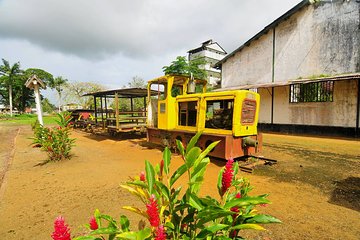
Nature and Wildlife Excursions
Suriname is blessed with pristine rainforests, breathtaking waterfalls, and diverse wildlife. Nature and wildlife excursions allow visitors to experience the country’s natural beauty and learn about its delicate ecosystems.
Central Suriname Nature Reserve
The Central Suriname Nature Reserve is one of the largest protected areas in the world and a UNESCO World Heritage site. This vast expanse of pristine rainforest is home to an incredible diversity of flora and fauna, including jaguars, giant river otters, and a myriad of bird species. Exploring the nature reserve on guided tours offers the opportunity to spot wildlife, hike through dense jungle, and marvel at stunning waterfalls.
Brownsberg Nature Park
Located near the Suriname-Brazil border, Brownsberg Nature Park offers visitors the chance to explore Suriname’s lush rainforest and enjoy stunning panoramic views from its mountain peaks. Guided hikes through the park’s well-maintained trails allow visitors to discover a multitude of plant and animal species, including monkeys, toucans, and macaws. A visit to Brownsberg Nature Park is a must for nature enthusiasts and those seeking a peaceful escape from city life.
Turtle Watching on Galibi Beach
Galibi Beach, situated on the northeastern coast of Suriname, is famous for its nesting sea turtles. Between February and August, endangered sea turtles, such as the giant leatherback and green turtles, come ashore to lay their eggs. Visiting Galibi Beach during the nesting season offers a unique opportunity to witness these ancient creatures in their natural habitat and learn about the conservation efforts to protect them. Guided tours allow visitors to observe the turtle nesting process while ensuring minimal disturbance to the turtles.
Culinary Experiences
Surinamese cuisine is a tantalizing fusion of flavors from different cultures. Culinary experiences allow visitors to explore the diverse culinary traditions and indulge in traditional Surinamese dishes.
Traditional Surinamese Dishes
Surinamese cuisine is a reflection of the country’s multicultural society, with influences from African, Javanese, Hindustani, Chinese, and European cuisines. Traditional Surinamese dishes include “Roti” (flatbread with spicy curry), “Pom” (oven-baked chicken or fish with a citrusy flavor), and “BB met R” (brown beans with rice). Tasting these dishes is a delightful culinary adventure that showcases the harmonious blending of flavors and culinary techniques.
Street Food Markets
Suriname’s street food markets are a feast for the senses, offering a wide range of mouthwatering snacks and delicacies. Paramaribo’s bustling Waterkant Street is a popular spot to indulge in Surinamese street food, such as “Bakabana” (fried plantains), “Bara” (spiced split pea fritters), or “Broodje Pom” (sandwich with oven-baked chicken or fish). Exploring the vibrant street food scene allows visitors to tantalize their taste buds with a variety of flavors and textures.
Cooking Classes with Locals
For those who want to delve deeper into Surinamese cuisine, participating in cooking classes with locals is a fantastic way to learn traditional recipes and cooking techniques. Local chefs and home cooks guide visitors through the process of preparing Surinamese dishes, sharing their culinary knowledge and family recipes. These interactive cooking classes provide a hands-on experience that allows visitors to not only taste the flavors of Suriname but also take home the skills to recreate these dishes in their own kitchens.
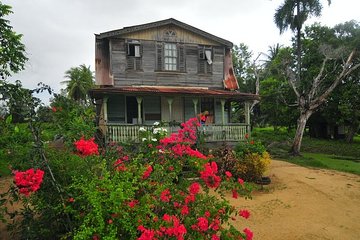
Traditional Festivals and Celebrations
Suriname is known for its vibrant festivals and celebrations, which showcase the country’s rich cultural heritage. Participating in these festivities offers a unique insight into Surinamese traditions and allows visitors to experience the joy and excitement of the local community.
Keti Koti (Emancipation Day)
Keti Koti, meaning “broken chains” in Surinamese Creole, is an annual celebration held on July 1st to commemorate the abolition of slavery in Suriname. The festival includes cultural performances, exhibitions on Suriname’s African heritage, and lectures on the significance of the abolition of slavery. Visitors can join in the festivities, witness traditional dances and music performances, and learn about the continued struggle for equality and justice.
Phagwa (Hindu Festival of Colors)
Phagwa, also known as Holi, is a Hindu festival celebrated in Suriname with great enthusiasm. The festival celebrates the arrival of spring and the triumph of good over evil. During Phagwa, people gather to throw colored powders and water at each other, symbolizing the joy and vibrancy of life. Joining in the festivities allows visitors to immerse themselves in the cultural traditions, connect with the local community, and experience the infectious spirit of Phagwa.
Krakelingen (Javanese Harvest Festival)
Krakelingen is a Javanese harvest festival celebrated in Suriname. The festival is a way to express gratitude for the bountiful harvest and to seek blessings for the upcoming planting season. Visitors can witness traditional Javanese dances and cultural performances, participate in rituals and ceremonies, and taste traditional Javanese dishes prepared especially for the festival. Krakelingen offers an authentic cultural experience that showcases the Javanese community’s deep connection with the land.
Cultural Performances and Arts
Suriname’s vibrant cultural scene comes alive through cultural performances and arts. Attending theatrical shows, music concerts, and art exhibitions allows visitors to appreciate the local talent and the creativity that stems from Suriname’s diverse cultural heritage.
National Theater
The National Theater of Suriname, located in Paramaribo, showcases a variety of performances, including theater productions, dance shows, and music concerts. The theater is a hub for local talent to showcase their creativity and connect with the audience. Attending a performance at the National Theater offers a unique opportunity to witness the dynamism and artistic expression that thrives in Suriname.
Traditional Music and Dance Shows
Traditional music and dance performances are an integral part of Surinamese culture. From the lively beats of the African drum to the intricate movements of Javanese and Hindustani dances, these performances showcase the diverse cultural traditions of Suriname. Attending traditional music and dance shows allows visitors to immerse themselves in the rhythm and energy of Surinamese culture and witness the passion and skill of the artists.
Art Galleries Showcasing Local Talent
Suriname’s art scene is thriving, with local artists showcasing their talent in galleries and exhibition spaces across the country. Exploring art galleries, such as the Onoribo Art Center and Readytex Art Gallery, allows visitors to appreciate the diversity of artistic styles and mediums used by Surinamese artists. From traditional paintings and sculptures to contemporary installations, Suriname’s art scene offers a visual representation of the country’s cultural richness.
Community-Based Tourism Initiatives
Community-based tourism initiatives in Suriname provide visitors with the opportunity to support local communities, engage in cultural exchanges, and contribute to sustainable development.
Supporting Local Communities
Community-based tourism initiatives in Suriname focus on empowering local communities and providing them with sustainable economic opportunities. By choosing community-based tours and purchasing locally made products, visitors can directly support the livelihoods of the people they encounter during their travels. This support helps to preserve cultural traditions, improve living standards, and promote a sense of pride and ownership within the local communities.
Homestays and Cultural Exchanges
Homestays offer visitors a unique opportunity to immerse themselves in the local culture and engage in cultural exchanges with host families. By staying in a traditional Surinamese home, visitors can experience the daily lives, customs, and traditions of the local community firsthand. This authentic experience fosters mutual understanding and appreciation between visitors and locals, promoting intercultural dialogue and friendship.
Volunteering Opportunities
Volunteering in Suriname allows visitors to make a positive impact on the local community and contribute to sustainable development. Volunteering opportunities can range from educational projects in indigenous communities to conservation initiatives in national parks. This hands-on experience not only provides valuable assistance to local organizations but also allows volunteers to gain a deeper understanding of Suriname’s culture and social issues.
Sustainable Tourism Practices
Suriname is committed to promoting sustainable tourism practices to protect its natural resources, wildlife, and cultural heritage.
Responsible Waste Management
Suriname is taking steps to improve waste management and reduce its environmental impact. Visitors can support these efforts by practicing responsible waste disposal, using reusable water bottles, and minimizing single-use plastic. Participating in beach cleanup initiatives and avoiding littering in natural areas also contribute to the preservation of Suriname’s pristine environment.
Protection of Wildlife and Natural Resources
Suriname is home to a diverse range of plant and animal species, many of which are endangered or vulnerable. Responsible wildlife viewing practices, such as maintaining a safe distance and not disturbing the animals, are essential to protect their natural habitats. Additionally, supporting conservation initiatives and national parks helps ensure the long-term preservation of Suriname’s rich biodiversity.
Promotion of Eco-Friendly Transportation
Suriname is actively promoting eco-friendly transportation options, such as cycling and electric vehicles, to reduce carbon emissions and promote sustainable mobility. Visitors can rent bicycles to explore Paramaribo’s historic inner city or opt for eco-friendly transportation options, such as shared electric taxis, when traveling within the country. These choices contribute to reducing the environmental impact of tourism and preserving Suriname’s natural beauty.
Conclusion
Suriname’s cultural tours offer endless opportunities to explore the local heritage, immerse in diverse communities, and gain a deeper understanding of the country’s cultural tapestry. From indigenous communities to African descendants and Javanese and Hindustani traditions, Suriname’s cultural diversity is a testament to its vibrant history and multicultural society. Cultural tourism not only allows visitors to experience the richness and beauty of Suriname’s cultural heritage but also plays a crucial role in preserving traditions for future generations. By engaging in cultural tours and supporting community-based initiatives, visitors can make a positive impact, promote intercultural understanding, and create unforgettable memories in the heart of South America.